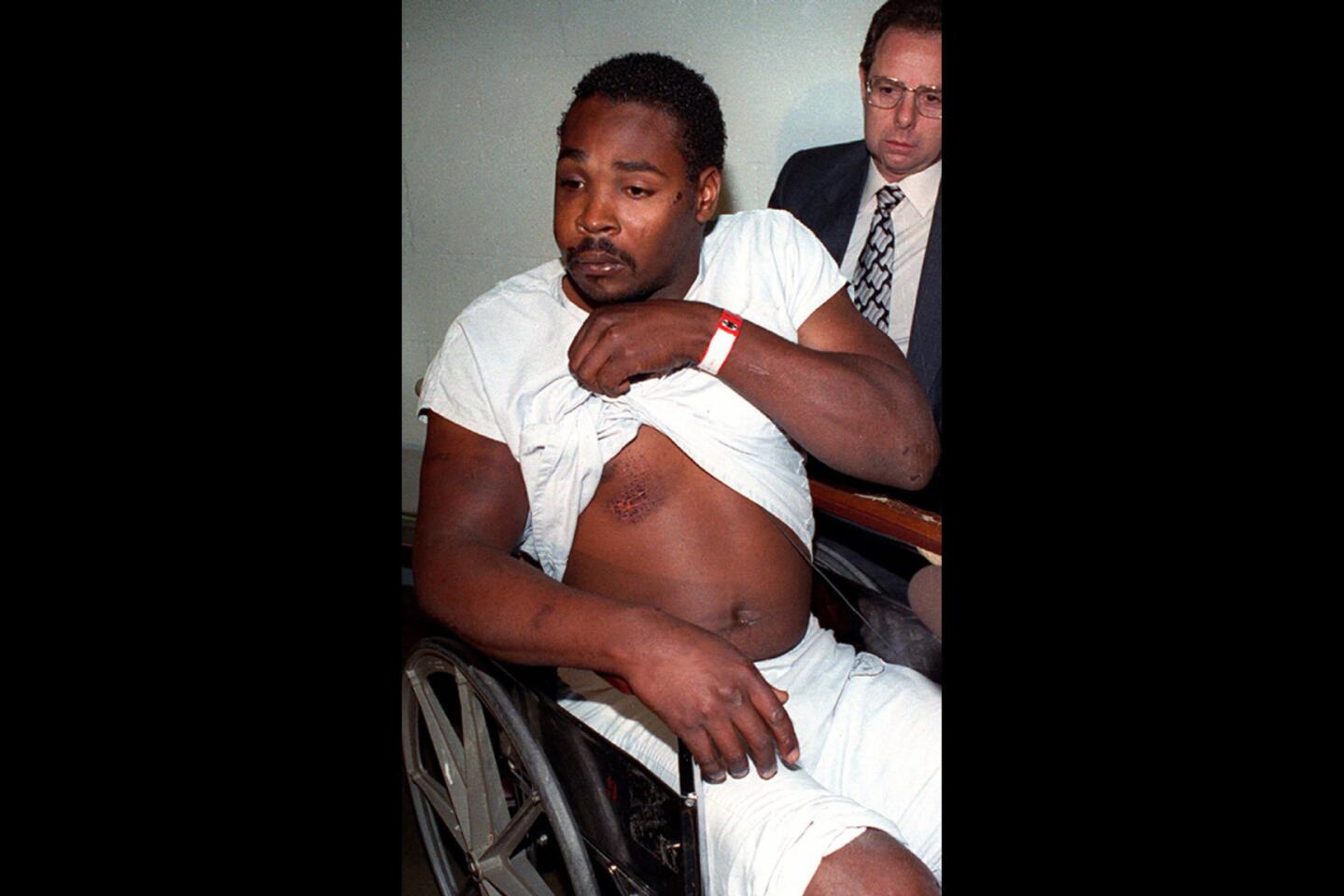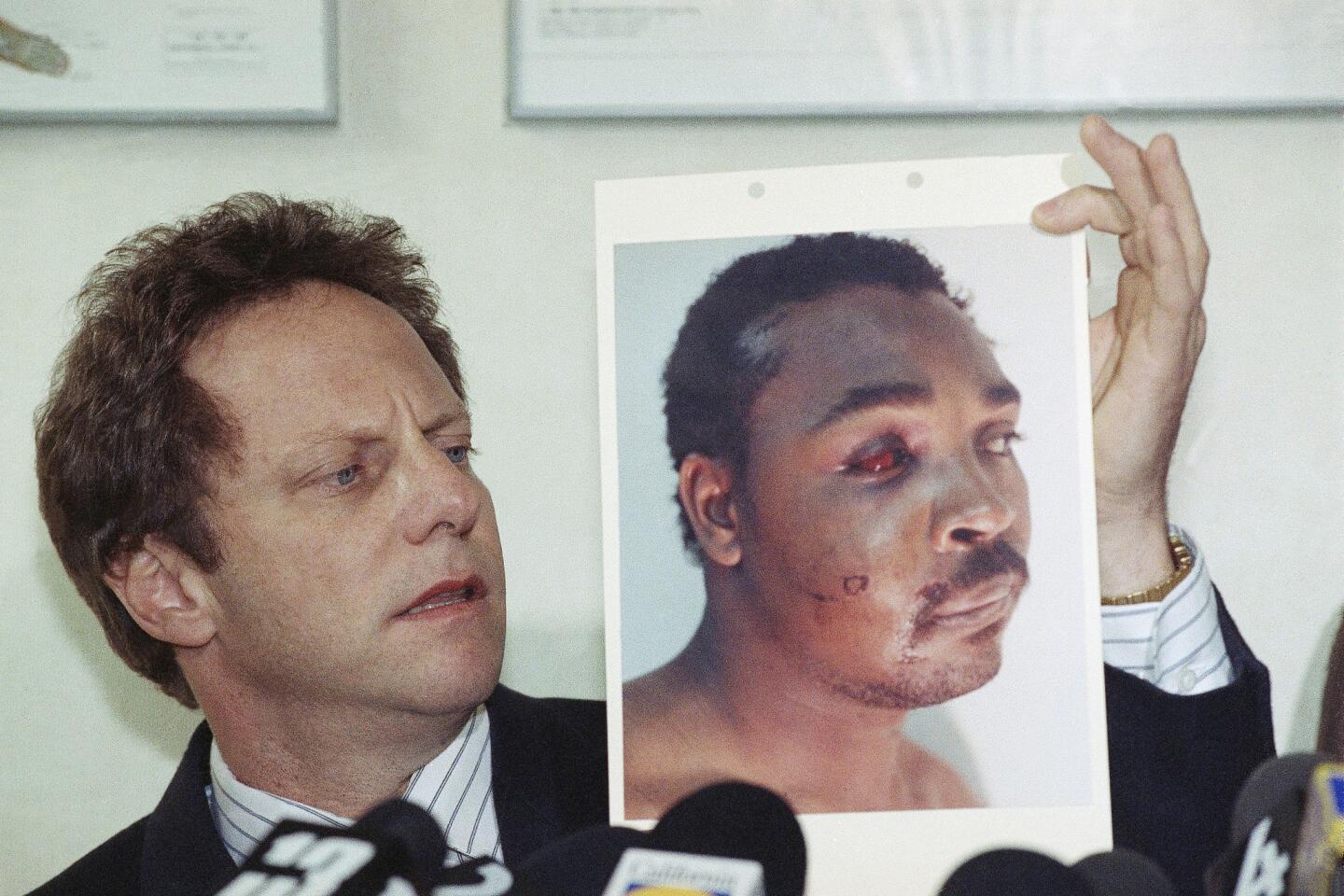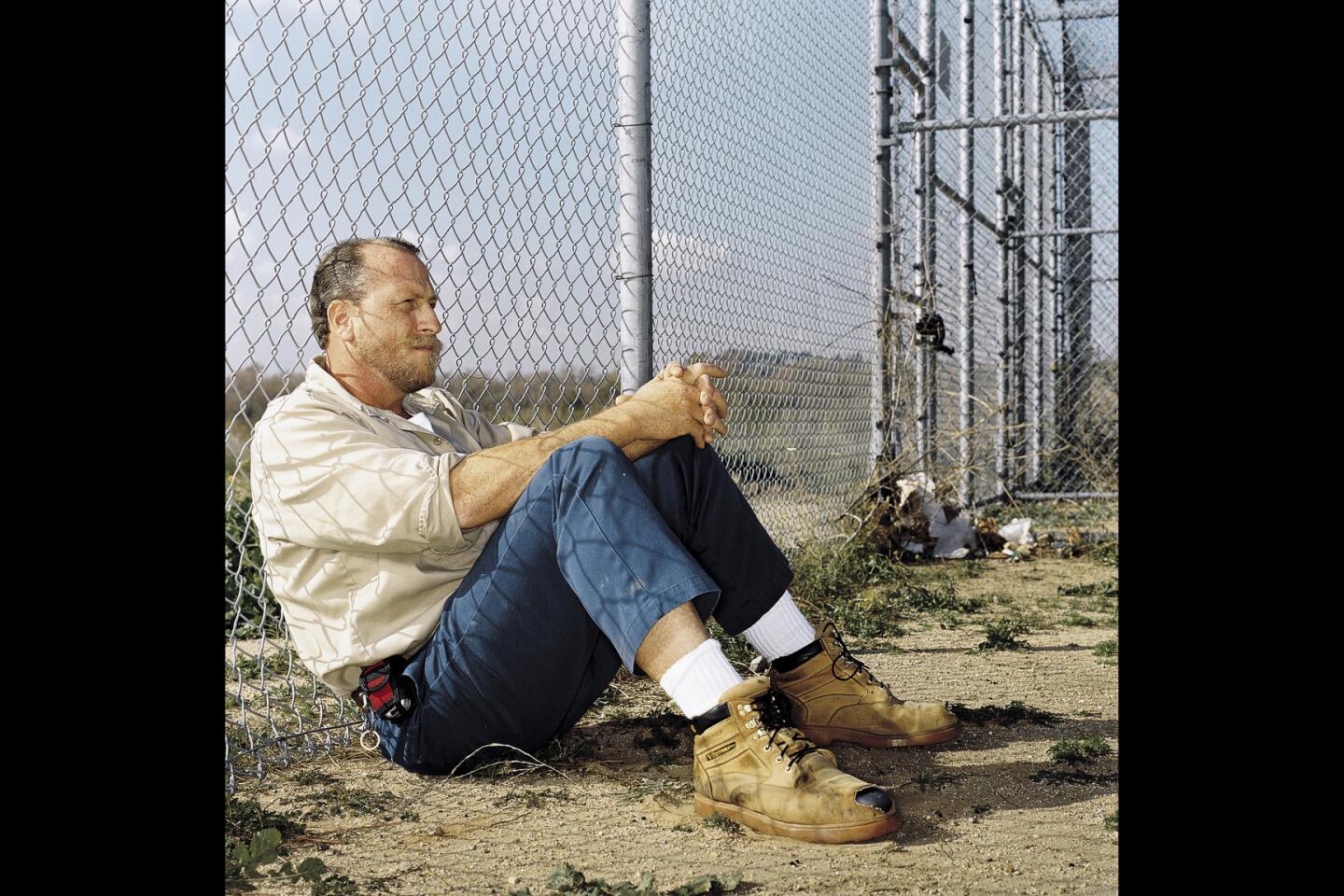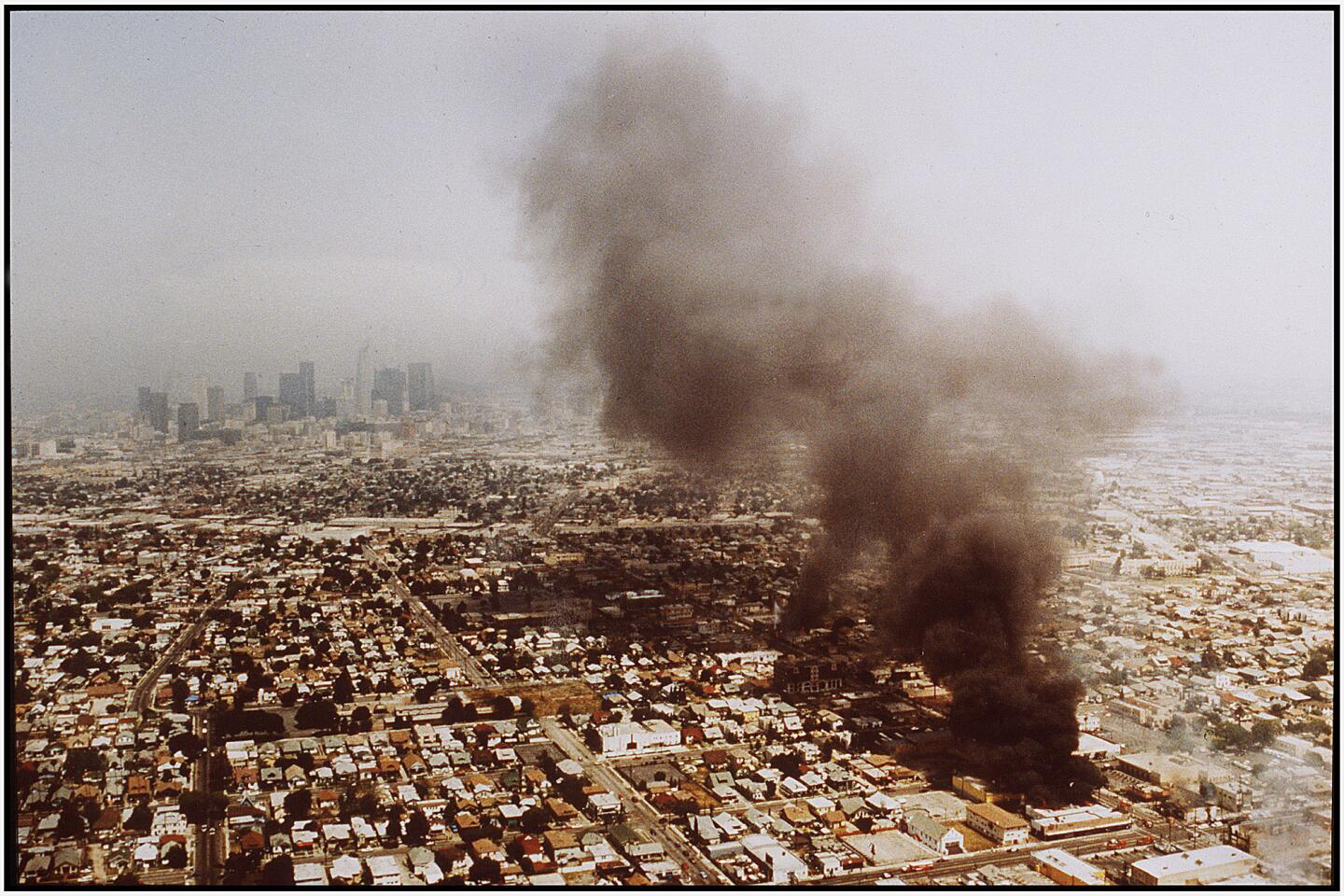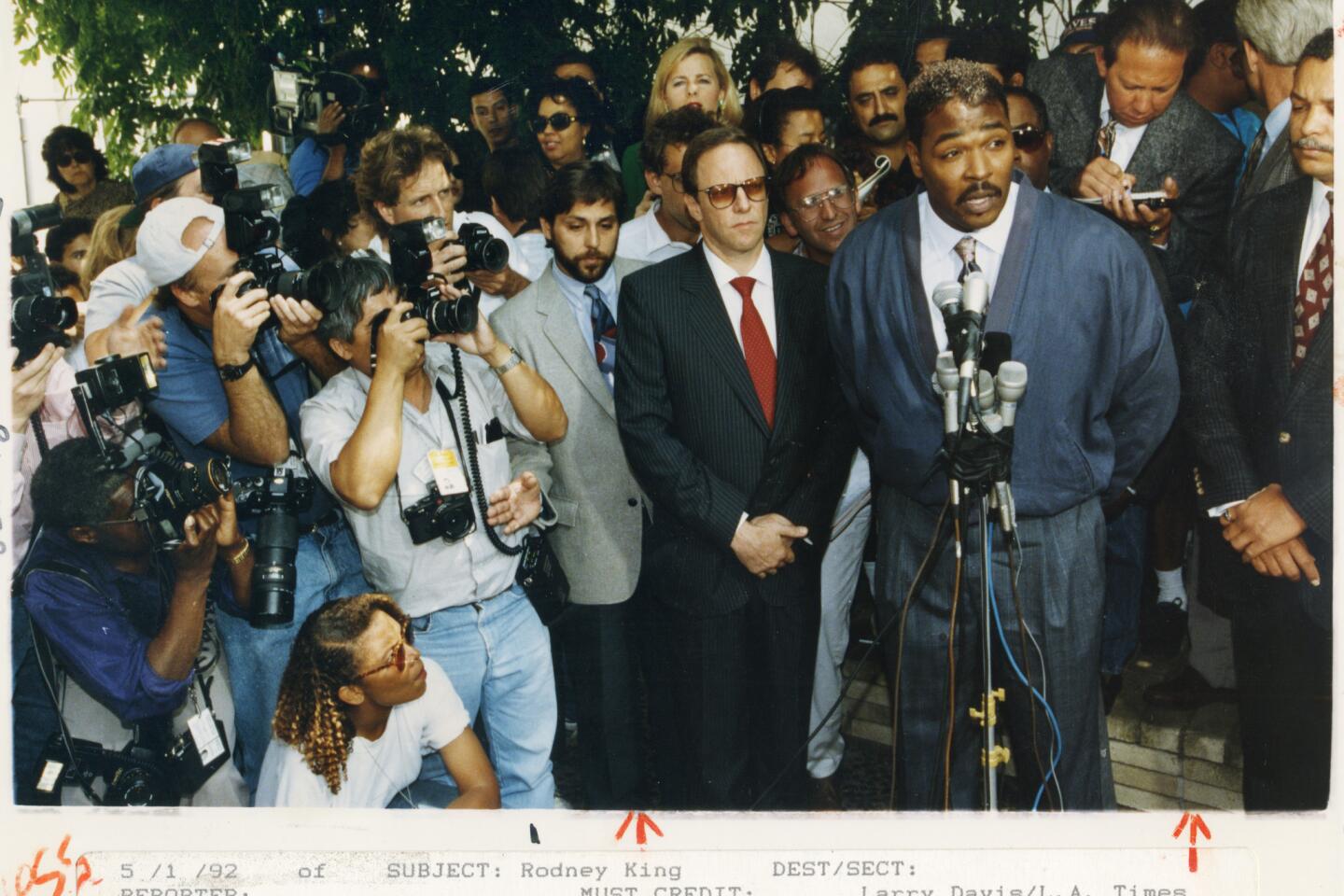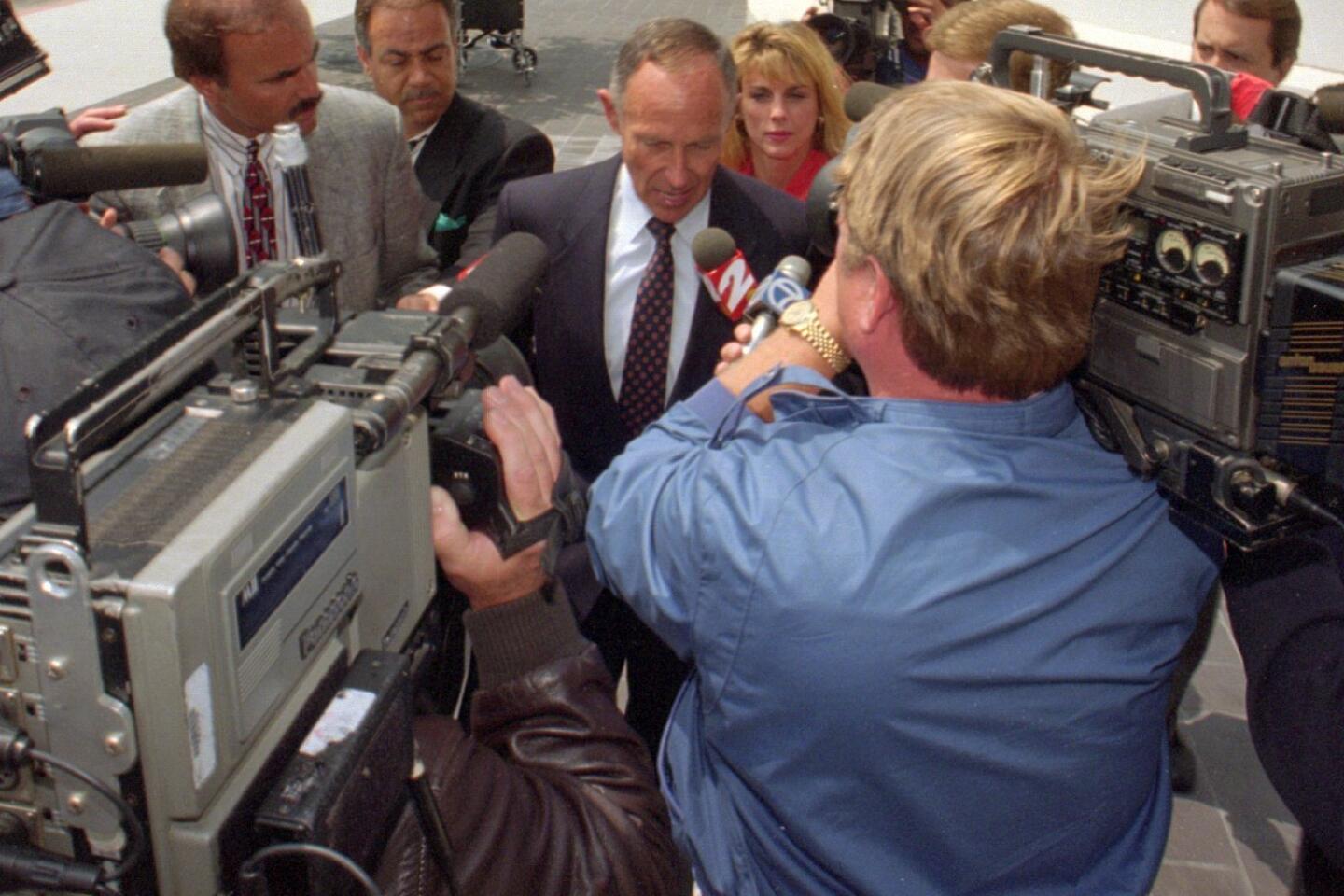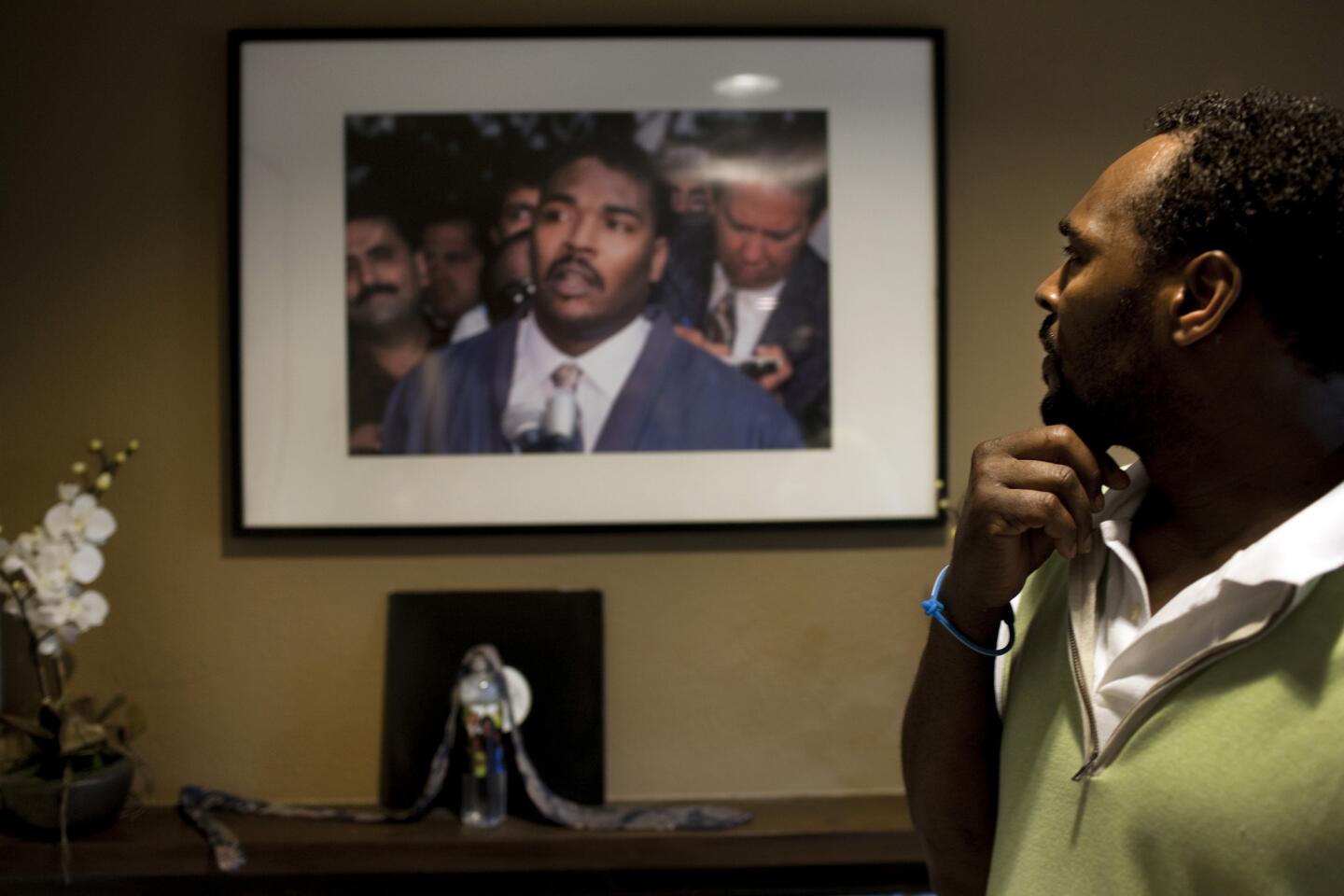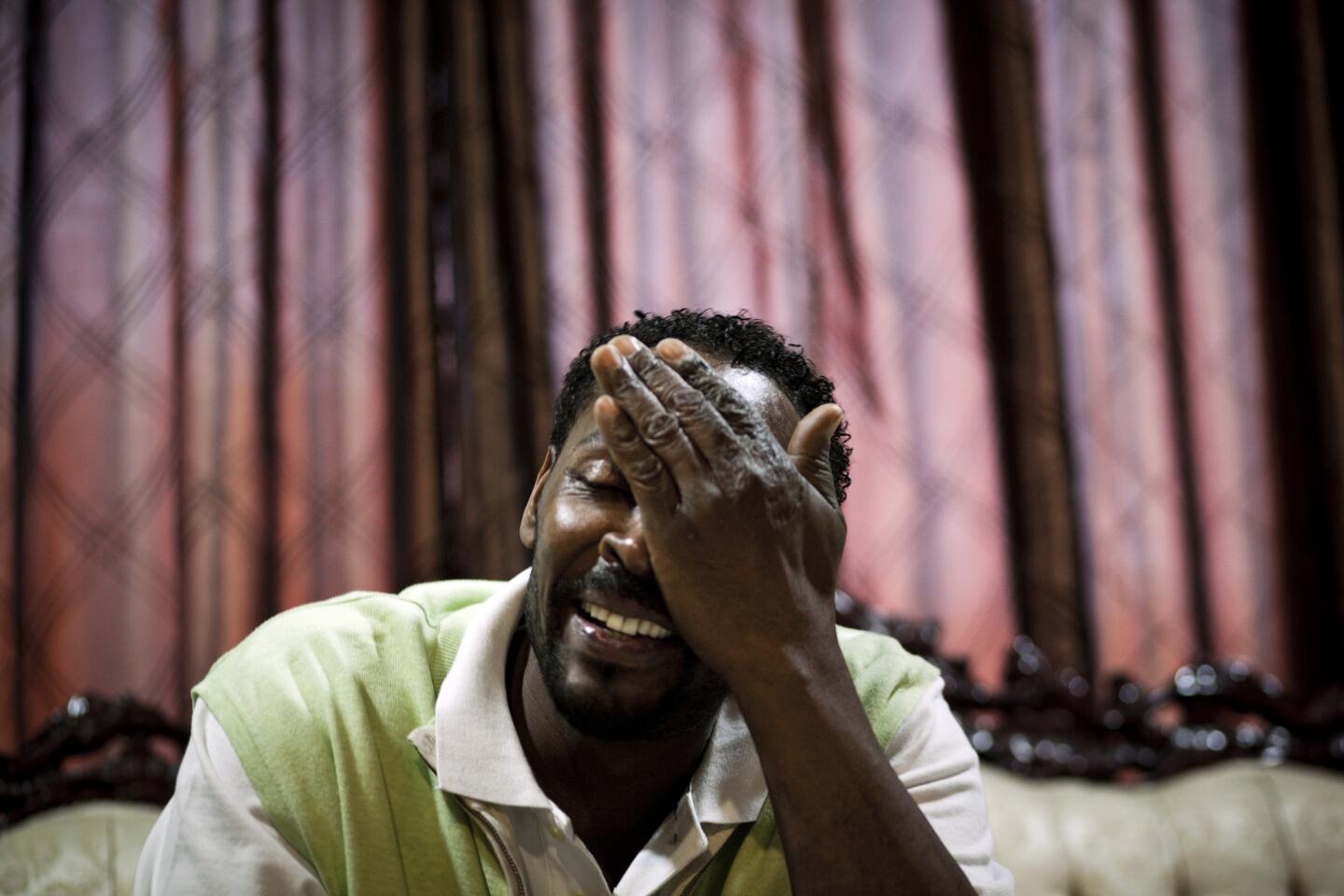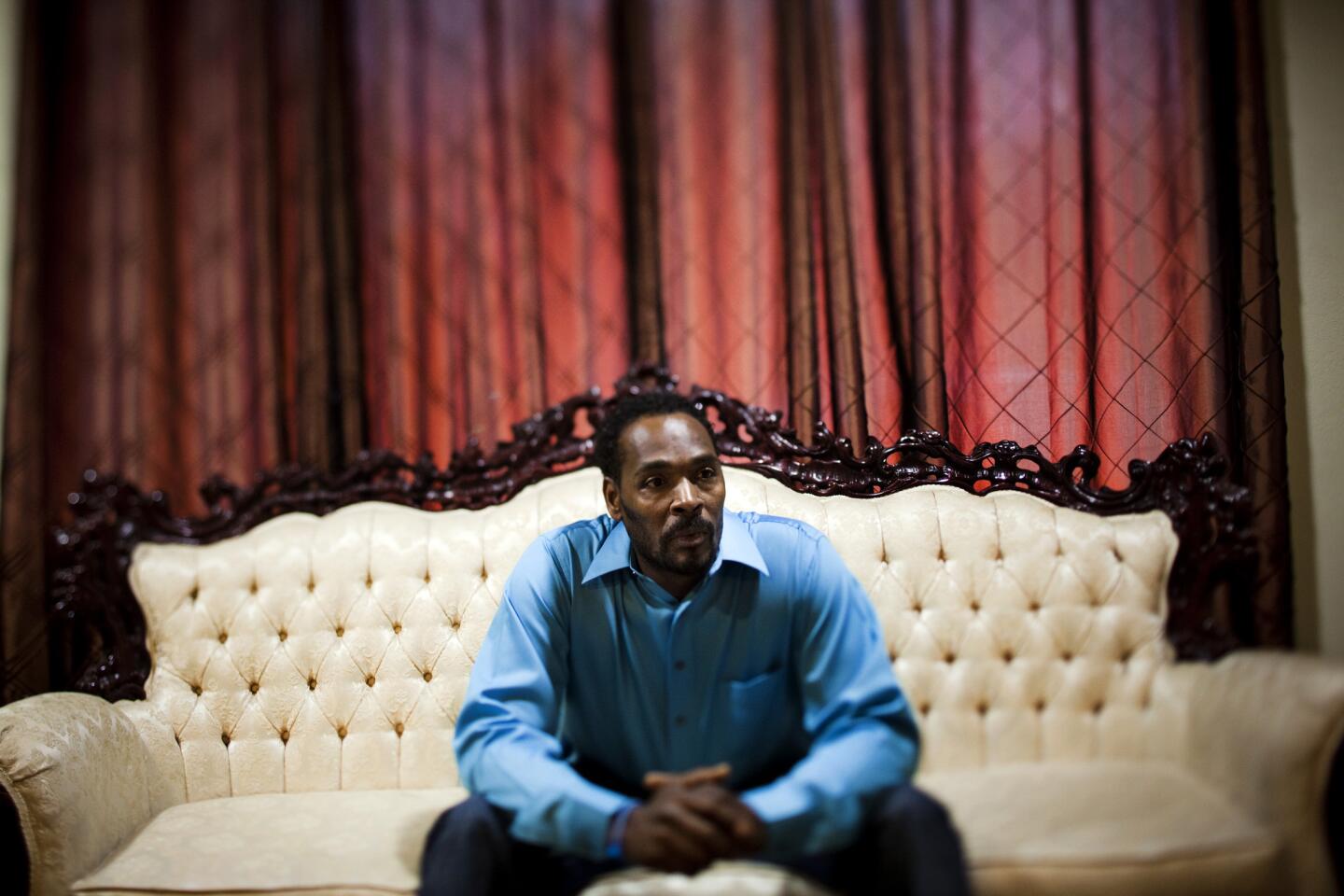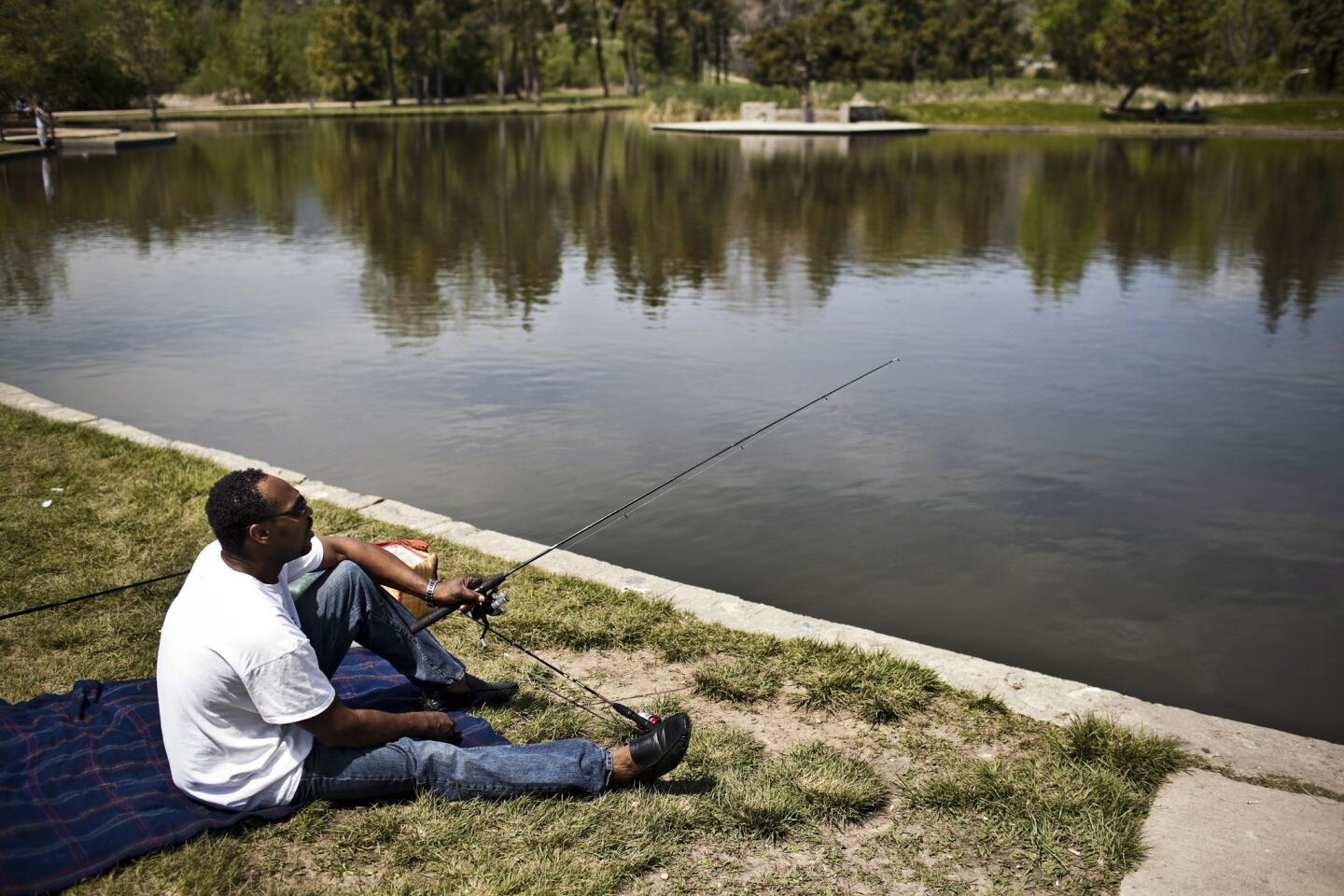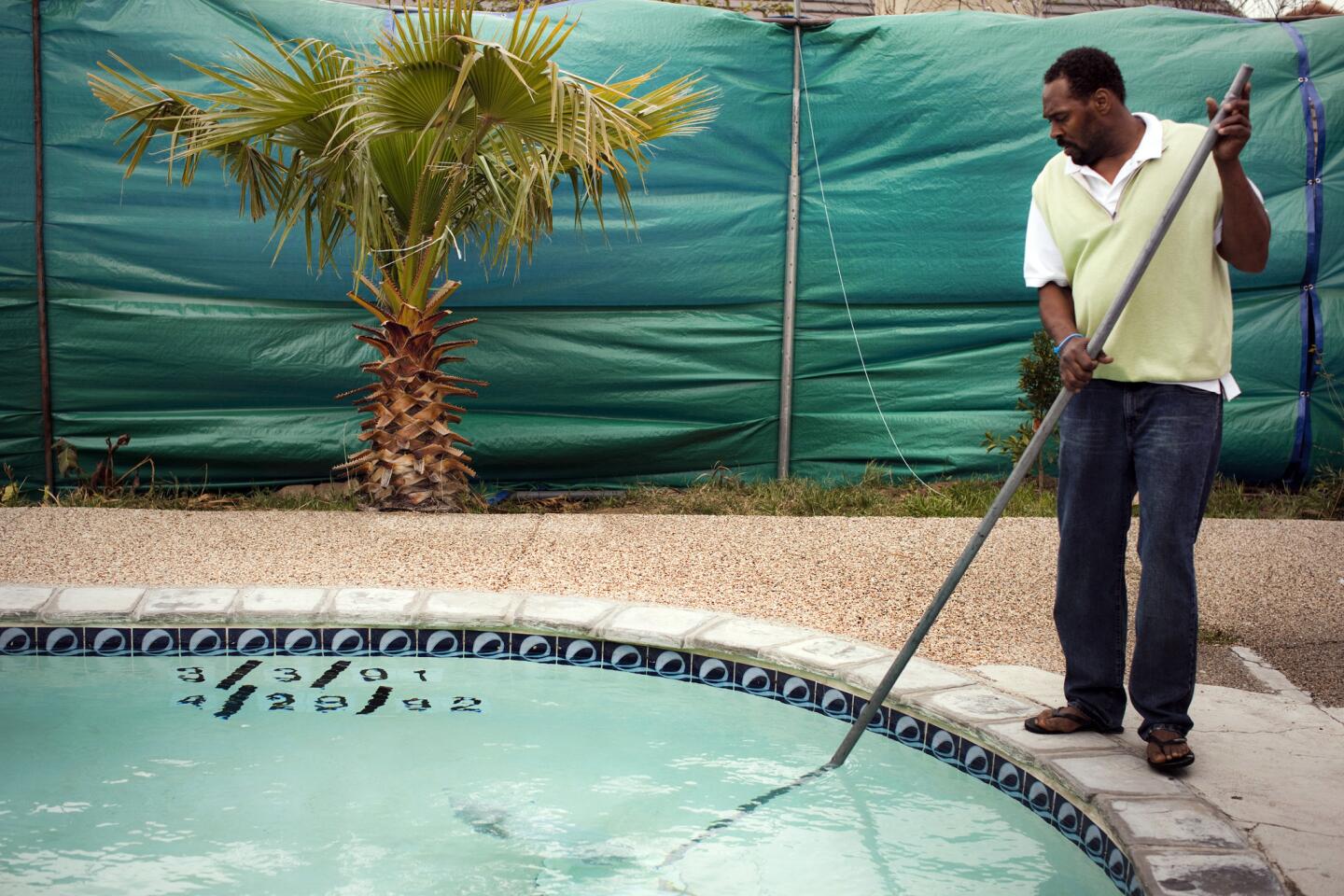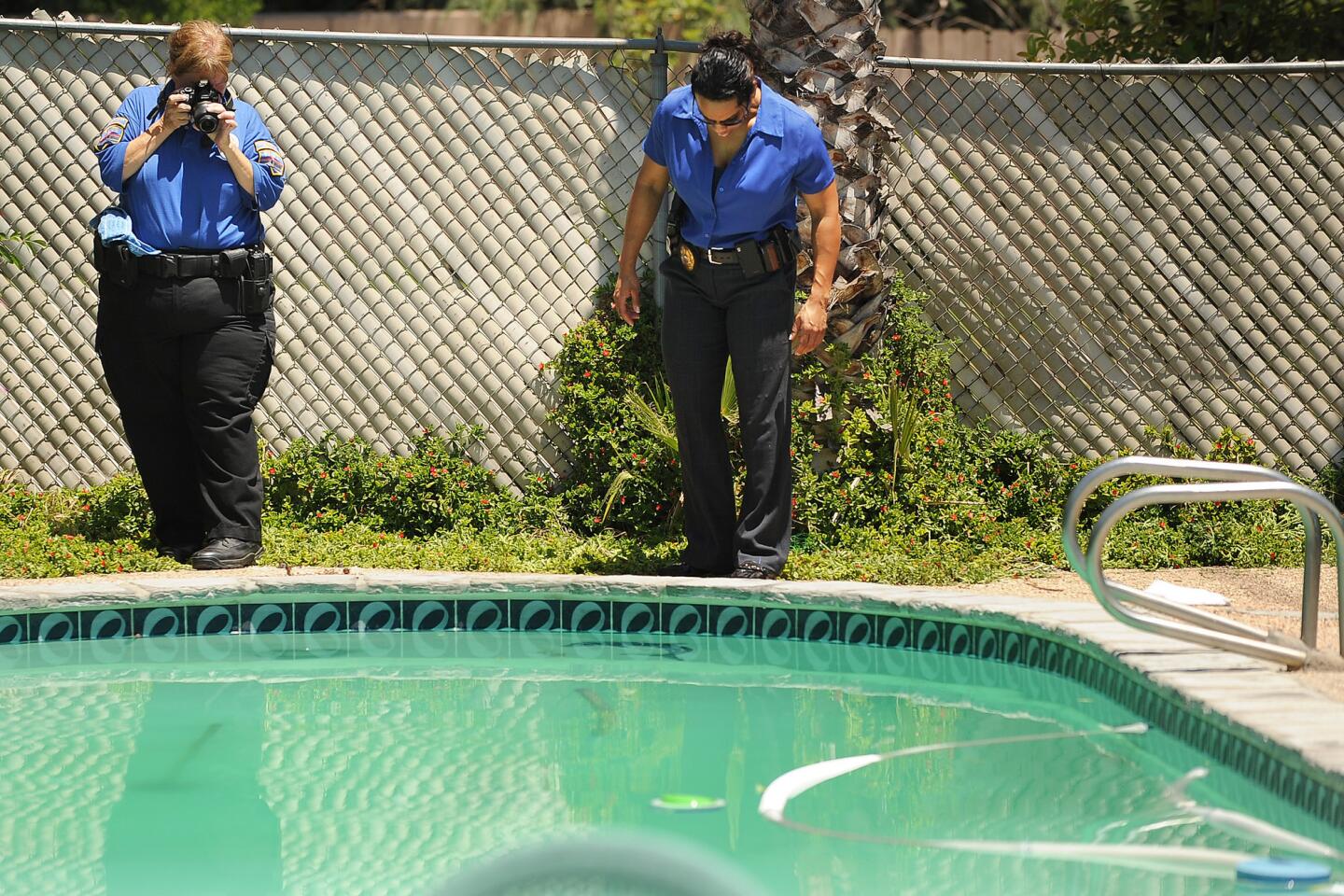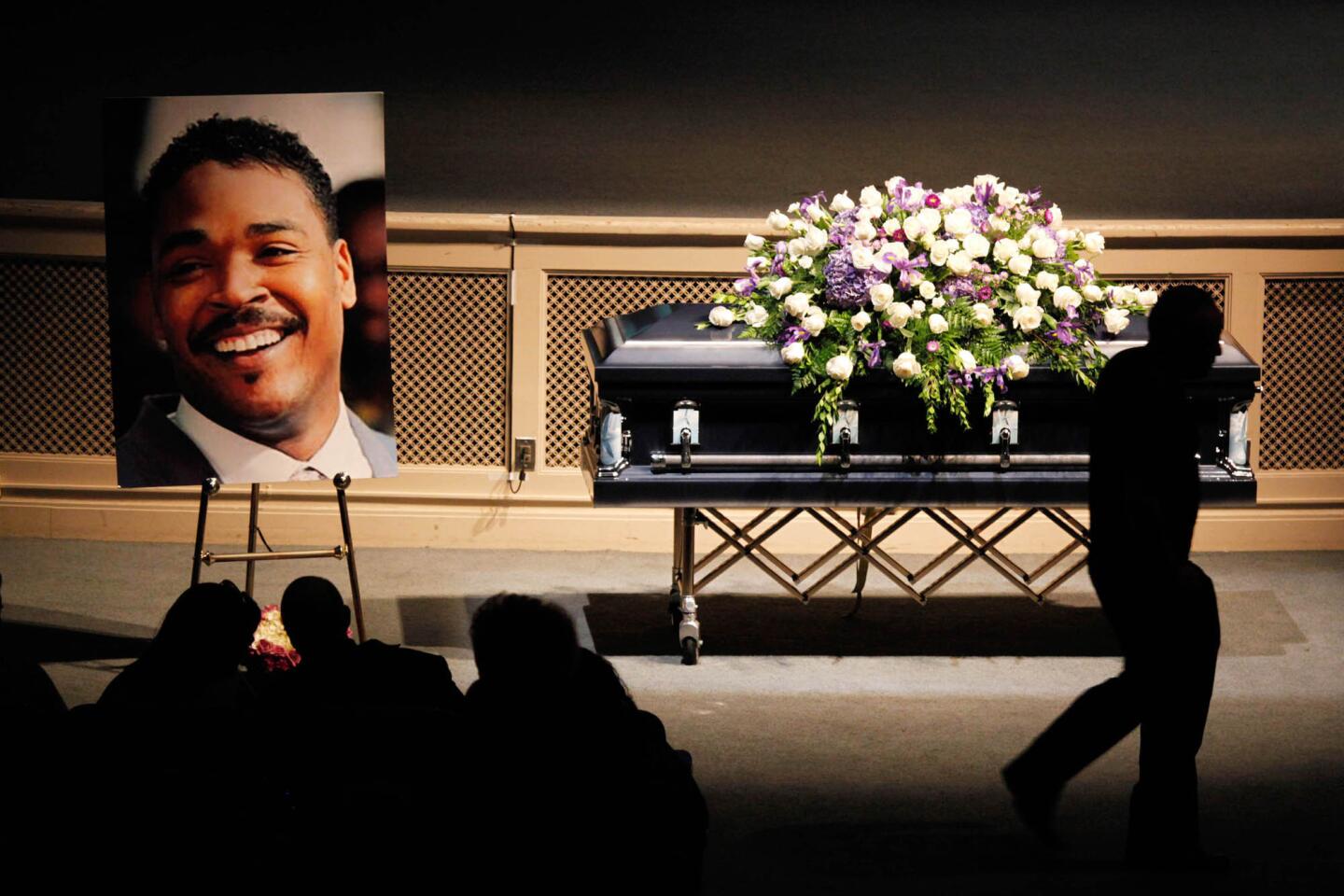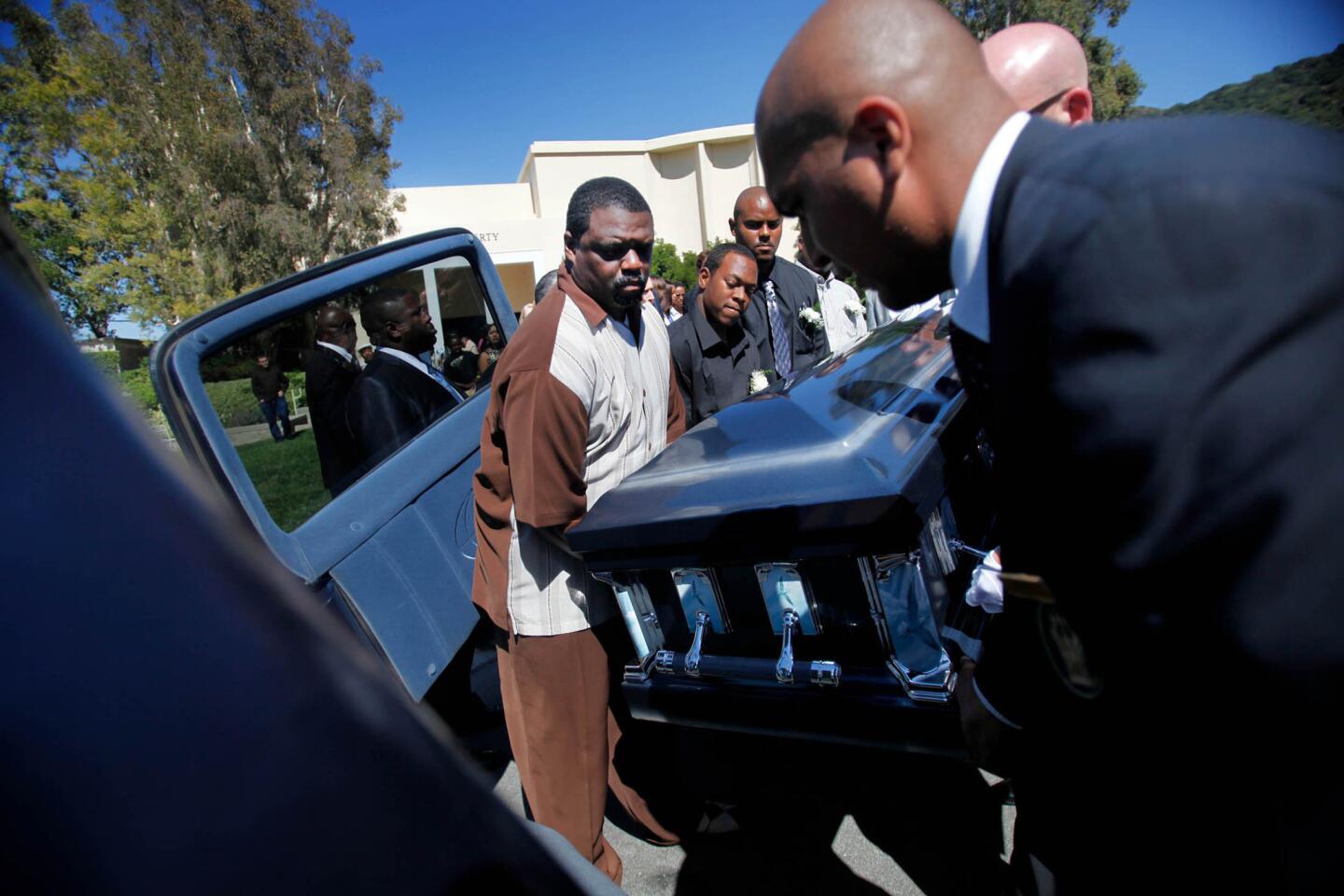From the Archives: Mayor Bradley lifts curfew tonight
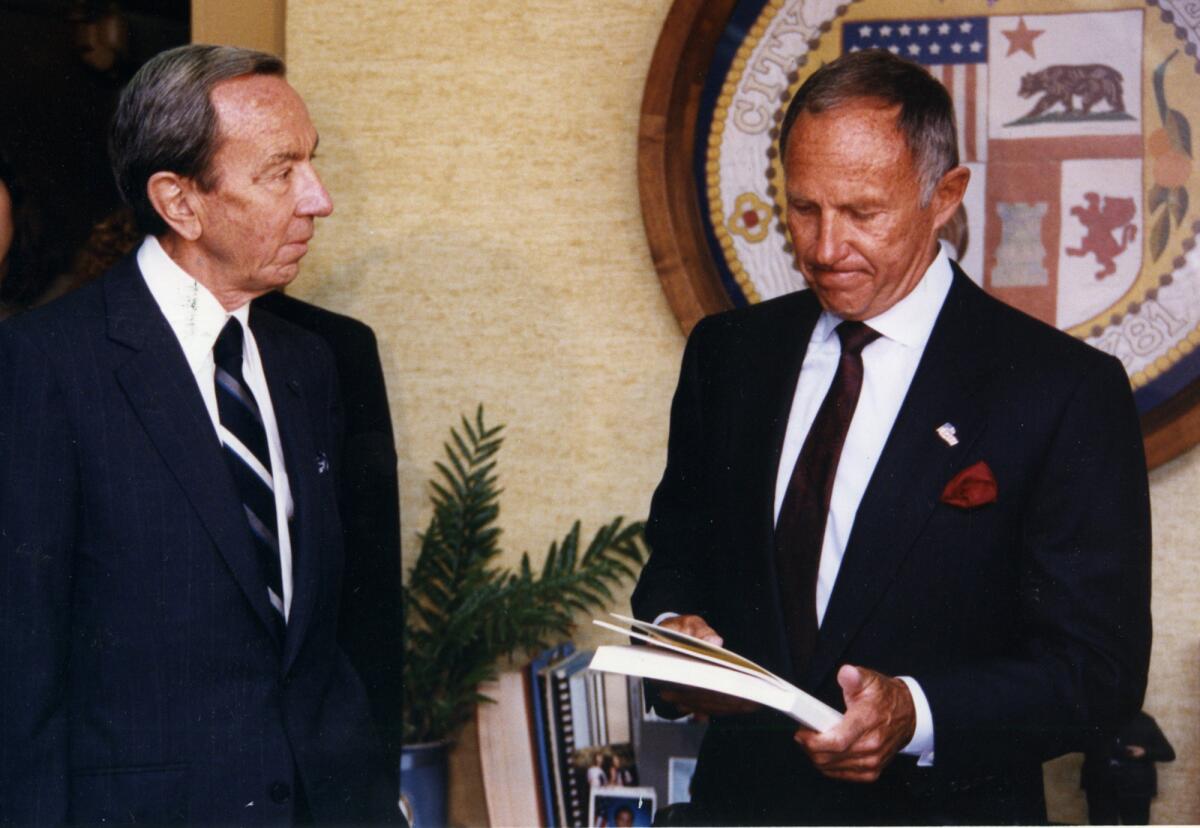
Warren Christopher hands a copy of the Christopher Commission report to Police Chief Daryl F. Gates in Gates’ office at Parker Center. The report examined the operation of the LAPD, especially its recruitment, hiring and training practices, internal disciplinary system and citizen complaint system in the wake of the King beating.
- Share via
Raising the curtain on post-riot Los Angeles, Mayor Tom Bradley on Sunday announced that he is lifting the dusk-to-dawn curfew as of tonight and declared optimistically that the looting, arson and violence of last week now “appears to be under control.”
Under control, perhaps, but life was far from normal: National Guard members Sunday night shot and killed a motorist they said drove toward them after running a barricade at the corner of Pico Boulevard and Vermont Avenue. The unidentified man was the first person struck by Guard gunfire since the force arrived Thursday.
By Sunday evening, nearly 8,500 members of the Marines, Army and National Guard were stationed inside the riot areas, maintaining the fragile calm that was established Saturday. Sources close to the mayor said the troops will remain at least through Wednesday afternoon.
Bradley, however, would not speculate on when the city’s occupation by rifle-toting soldiers might end, and said their presence is the only reason he is abandoning the four-day old curfew.
For residents, the presence of the troops was an unsettling reminder that the chaos remained unconquered. But officials worried that if the soldiers left, the rioting might resume.
“If they are needed for weeks,” the mayor said, “they are committed to be here for weeks.”
In other developments Sunday:
* With the workweek looming, the city moved toward stability. Grocery stores slowly reopened, trash collection and mail delivery are to resume today. Schools in Los Angeles will be in session and people can go back to the beach. Electricity is expected to be fully restored in the inner city today.
* Transportation systems were intact again. Harbor Freeway off-ramps, which had been blocked through riot-torn South Los Angeles, were opened. Bus service got back on schedule. And at Los Angeles International Airport, normal operations resumed as incoming passenger planes were permitted to fly over Inglewood for the first time since the rioting began Wednesday night.
* The death toll rose to 51 killed in riot-related violence--including an 89-year-old woman who died Sunday after suffering a heart attack during disturbances Thursday. The arrest tally hit 10,164 with the population of Los Angeles County jails swelling to a record of more than 25,000 on Sunday. But in what Bradley and others called a very encouraging sign, there were no major reports of riot-related fires or looting. The mayor said: “The true face of Los Angeles is being seen on the streets and in the neighborhoods.”
* Archbishop Roger M. Mahony urged looters to return stolen merchandise by bringing it to churches--no questions asked. And police in Hollywood reported that, acting on tips from residents, they recovered four truckloads of looted merchandise. “As they entered residences to look for stolen property,” said LAPD Capt. Francisco Pegueros, “they would come back and find people had abandoned property in hallways or elevators, obviously in an attempt to give the property back but not get arrested.”
* Federal authorities said the FBI and the U.S. attorney’s office were investigating the torching of Korean-owned businesses and the attack on a white truck driver at the South Los Angeles intersection where the unrest began. Sheriff Sherman Block, urging federal prosecutions, said the acts “clearly constitute attacks on people and property simply because of their race.”
* The South Korean Foreign Ministry announced that its government will send a delegation to Los Angeles this week to seek reparation for hundreds of Korean-American store owners who suffered damage in the rioting. “Damage was more than physical, but the collapse of the American Dream,” said Parliament Speaker Park Jyun-Kyu.
* The federal Centers for Disease Control disclosed that four investigators will be sent to Los Angeles today to help local health officials chart the epidemiology of the riots, including the causes of death, the types of weapons used to inflict injury and the sociological explanation for the violence.
* On the national political scene, the riots emerged as a presidential campaign issue. Democratic candidate Bill Clinton arrived in Los Angeles to meet with community leaders and inspect the aftermath of the rioting. Ross Perot, a likely independent candidate, criticized President Bush for failing to make such a trip. The President, meanwhile, prayed Sunday for an end to the violence during a morning chapel service at his Camp David, Md., retreat. He is scheduled to come to Los Angeles Thursday on a previously planned trip and expects to survey the riot damage then.
* City officials declared that volunteer efforts to tidy up the city had been extraordinarily effective. More than 30 tons of debris were dumped at one of two landfills that the city made special arrangements to open. But a larger and far more expensive task remains: clearing the rubble from thousands of burned-out buildings.
Mood of the City
With the weekend drawing to a close and the workweek about to begin, city leaders and residents seemed eager for life to return to familiar patterns. But many were not yet able to put last week’s devastation--touched off Wednesday by not guilty verdicts in the trial of police officers who beat Rodney G. King--behind them.
In Pico-Fairfax, Brenda Cansler, a black 39-year-old mother of two, said she wished the curfew would be extended an extra week and the National Guard kept around indefinitely. She worried about sending her 12-year-old son back to his ethnically mixed school. Racial tensions, she said, may explode there next.
“Any little thing could cause a riot,” she said.
Yet in South Los Angeles--the area of the city that was hardest hit by violence--Debra Williams, a black 31-year-old mother of two, expressed the opposite view.
“I know it’s over,” she declared, saying she has no problem letting her 11-year-old go back to school. “You don’t hear as many sirens. Curfew is being lifted. They’re not arresting people and they’re back to the regular shows on TV. I feel real good about that.”
The city landscape was dotted with post-riot oddities:
Scores of looky-loos, perhaps tired of being cooped up at home, ventured into pillaged neighborhoods for a Sunday drive. At the corner of Western Avenue and Santa Monica Boulevard, caravans of cars cruised slowly past the boarded-up storefronts and charred debris. Camcorders and Instamatics were aimed out windows. Drivers honked at military men and women, who waved back and hollered hello. Many of the spectators jumped out of their cars to get their pictures taken with the troops.
“This is history,” said Sandy Forman, 38, of Hollywood, as he posed his girlfriend next to a soldier in front of some smoldering ruins.
Across the street from a burned-down shopping mall on West Adams Boulevard, dozens of families held picnics in a park. Children played on swings, young boys shot hoops, and mothers pushed babies in strollers. A block away, surrounded by members of the National Guard dressed in camouflage gear, fruit vendors calmly sold their wares.
In South Los Angeles, taxicab drivers were offering $1 fares for stranded residents who needed to go shopping for food but whose neighborhood grocery stores were burned down. The service was sorely needed; there were long lines at most gas stations, and a few pump owners were rationing fuel to two or three gallons per customer.
At Vernon and Central avenues, in the parking lot of what had been the corner Jack-In-The-Box, three men from Orange County stood flipping pancakes on a gas grill and offering them, free, with plenty of butter and syrup, to passersby. It was just one of a myriad of volunteer efforts to bring food to the neighborhoods hardest hit by the violence.
In the Fairfax district, barely a third of the merchants showed up at the Farmer’s Market and customers were sparse on what is usually one of the market’s busiest days. Nearby, one man tried with difficulty to hawk cotton candy on a street with almost no traffic. Said one merchant: “Everything just seems really still.”
Visions of last week’s flames and fury remained seared in the public consciousness.
Sophia Gillette of South Los Angeles went shopping at one of just a handful of grocery stores open for miles around--the Boys Market on Crenshaw Boulevard. She said she will always bear the scars of the destruction of her neighborhood.
“People will never be able to forget about it,” she said, loading bags of groceries into her car. “All they’ll have to do is look across the street at the burned-up grocery store, or the liquor store that used to be there, and they’ll be reminded of what happened.”
And in Koreatown, Yong and Jeoung Lee had few expressions of hope Sunday as they mourned the death of their 18-year-old son, who was shot Thursday night while helping friends protect their businesses. “Others in Koreatown, they can rebuild,” Jeoung Lee said. “But where can I go to rebuild my son?”
The Cleanup
Some found catharsis in cleaning. Sunday’s volunteer cleanup was so exhaustive that crews even swept streets in areas of the city unaffected by the rioting.
“It is totally cool. It is so exciting,” said Felicia Marcus, president of the city Board of Public Works, going so far as to claim: “L.A. is probably cleaner than it has ever been.”
As damage estimates hit $717 million, city officials raided department supplies, coming up with thousands of plastic bags, which were distributed to volunteer groups. At one staging area, Marcus said, they had 80,000 trash bags to distribute.
Thousands of people brought their own brooms and set to work, leaving neatly closed trash bags on streets where glass shards and paper had been. Their efforts were so ardent that “the citizens spontaneously have completed virtually all of the volunteer cleanup,” said Bill Russell, who is heading the city’s volunteer coordination.
Waste haulers donated 35 dumpsters through Operation Clean Sweep, an anti-litter and graffiti program, and the city arranged to have two landfills--Lopez Canyon and Puente Hills--opened during the weekend for riot detritus.
The 10 phones at the city cleanup hot line rang incessantly Sunday, with more than 1,000 names and phone numbers collected for future efforts. Russell said advance scout cars found little need for the volunteers today, but he hopes to organize shuttles in coming days to deliver food, help with child care and transport residents who need to get to doctors, dentists, barbers, “whatever they need.”
View From City Hall
At City Hall, the mood became one of relief as Bradley, looking more relaxed and rested, announced the lifting of the curfew and proudly ticked off the resumption today of many disrupted city services: trash collection, home mail delivery, public transportation and electricity.
He also reported “no significant” criminal activity for the second day in a row, confirming a growing sense of calm felt on the streets from South Los Angeles to Westwood. For the first time since rioting erupted Wednesday he talked about “de-escalation” of the crisis.
“Stay indoors tonight,” Bradley said Sunday. “Tomorrow night you will be free to walk and ride the streets of Los Angeles.”
With much of the city still questioning why it took so long for police to respond to the rioting during its early stages, Bradley indicated that he would support a Police Commission investigation of the LAPD response to the crisis. Some police officers on the street have complained they were ready to move Wednesday night, but officials at Parker Center were slow to react.
Some of Bradley’s aides continued to meet with federal officials about speeding up disaster relief for residents and small businesses, and Bradley said the aid should be available within 30 days. He expressed optimism that business owners in the city’s most riot-ravaged areas will decide to rebuild--not relocate.
The feeling in South Los Angeles, Bradley insisted, is one of “improving, not moving.”
An Uneasy Peace
Thousands of federal troops maintained the peace in Los Angeles Sunday, but flashes of violence and jittery rumblings of a potential resurgence complicated the decision about how long the military should patrol the streets.
“Word of mouth I heard is that as soon as these guys pull out, they’re going to start all over again,” said Bobby Gantt of Compton, as he smoked a cigarette and looked over the rubble of a gas station where he once worked. “I don’t think the heat has died down yet.”
In South Los Angeles, Jose Gutierrez said he’d heard the same thing: “Once the troops leave,” he warned, “it’s just going to explode again around here.”
By Sunday evening, roughly 8,500 Marine, Army and National Guard members were stationed in and around the riot areas, maintaining the fragile calm. Army troops were stationed in El Monte; Marines were spread throughout Compton and camped out at a Long Beach police station in case they were needed.
The bulk of the military force, more than 6,000 National Guard members, held positions across the city, backing up the police by securing motels, banks, markets and shopping areas, many of which opened their doors for the first time since the rioting erupted.
However, authorities said most of the 1,200 backup federal law enforcement officers--such as FBI, marshals, Border Patrol--ordered here only three days ago will start leaving this morning.
There were three reported incidents involving the military. In addition to the shooting at Pico Boulevard and Vermont Avenue, a Guard member fired a shot to break up a fight between those involved in a hit-and-run accident at Hoover and 41st streets. In addition, Marines in Compton reported the sound of a gunshot from a passing truck early Sunday morning, but when the superiors investigated, they determined it had probably been a vehicle backfiring.
The soldiers and Marines were thick in some areas: In Compton, they took shelter in dumpsters, their guns and helmets peeking out from over the top of the steel containers. In South Los Angeles, they slathered on suntan lotion and took up positions on rooftops. Downtown, their sand-colored armored vehicles were double-parked along some city streets.
Historically, troops and the National Guard have not been called to hold riot-torn areas for long periods of time. In Detroit in 1967, federal troops entered the city as the violence there was peaking. Those troops stayed four days before withdrawing to a fairgrounds outside the city.
In Los Angeles, even as officials began looking toward the end of the military presence, there was a new and heightened round of bickering about the time it took for the first National Guard units to arrive.
Appearing on ABC’s “This Week With David Brinkley,” Gov. Pete Wilson acknowledged that “mistakes were made” in delivering the Guard’s equipment and ammunition, and said he was investigating to see what caused the delays.
“Someone’s head may very well roll,” Wilson said. “But what I’m interested in is protecting people, not trying to point fingers.”
Although Wilson has repeatedly criticized the Guard response in recent days, he went further in his comments Sunday, saying for the first time that he believes local law enforcement officials shared the blame for delays. “They weren’t very enthusiastic about the additional federal troops,” the governor said. “That was done because the mayor and I thought it was necessary.”
But Bradley rejected any suggestion that Gates or Block did not act aggressively enough to put the Guard into position.
“I made the request for the National Guard at 8:13 Wednesday night,” Bradley said. “The chief was fully supportive of that. There were some technical and logistic problems that they ran into that delayed the start of the National Guard presence in the system, but that was not a lack of will, as far as I know.”
Although officials acknowledge that life cannot return to normal as long as the city is under military supervision, they also say that the worst possible scenario would be to let the troops go home and then be forced to battle a new round of looting or arson.
“I would hope we could go through the next three or four days with those troops here in the streets in a peaceful mode,” Police Chief Daryl F. Gates said on the CBS program “Face the Nation.” “Then we could be assured of sending them home.”
Indeed, the military presence brought an uneasy peace to Los Angeles as residents expressed mixed emotions about having armed soldiers on their streets.
“I had to leave El Salvador because the army was everywhere,” complained 27-year-old Marta Loza of East Hollywood. “I come to the United States, and what do I see? La Guardia Nacional!”
Yet in South Los Angeles, Carl Wilson welcomed the soldiers. Wilson, 30, worked as a stock clerk for 12 years at a market that was burned down Friday night. He said he was enjoying the freedom that came with arrival of a heavy military presence and police in a neighborhood that has been wracked by gang violence.
“Man, I’ve never felt this comfortable before,” he said. “I’ve lived here 30 years and I have never stood on this corner because of the violence. I hope they never leave. It’s like we’re free for as long as they’re here. “
This report was written by staff writer Sheryl Stolberg.
Also contributing to today’s coverage are Eric Bailey, Leslie Berger, Howard Blume, Greg Braxton, Mathis Chazanov, Rich Connell, Miles Corwin, Ashley Dunn, Petula Dvorak, Paul Feldman, Laura Galloway, Kenneth J. Garcia, Larry Gordon, Tina Griego, Neison Himmel, Bernice Hirabayashi, Shawn Hubler, Amy Louise Kazmin, Roxana Kopetman, Don Lee, John Lee, Dave Lesher, Maureen Lyons, Victor Merina, Lisa Omphroy, Richard O’Reilly, Judy Pasternak, Mark Platte, Janet Rae-Dupree, James Rainey, George Ramos, Cecilia Rasmussen, Carla Rivera, Deborah Schoch, Richard Simon, Vicki Torres, Mike Utley, Tracy Wilkinson, Tracy Wood and Eric Young.
The Toll
As of 10:30 p.m. Sunday, authorities reported the following tallies: * Deaths: 51
* Injuries: 2,328, including 228 critical. Among the injured are 10 firefighters and 71 law enforcement officers. LAPD officers were involved in eight shootings that resulted in injuries to suspects.
* Fires: 6,405 responses
* Arrests: 10,164
* Damage estimate: $717 million excluding Long Beach, according to the mayor’s office; 5,273 buildings damaged or destroyed, including at least 1,600 severely damaged or burned businesses; 3,100 businesses affected by rioting or looting.
More to Read
Sign up for Essential California
The most important California stories and recommendations in your inbox every morning.
You may occasionally receive promotional content from the Los Angeles Times.
